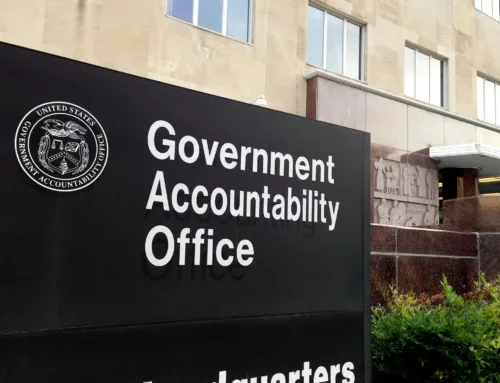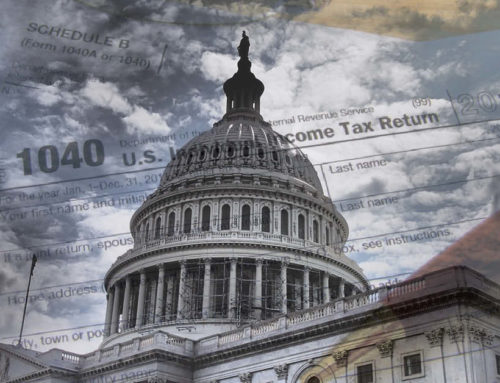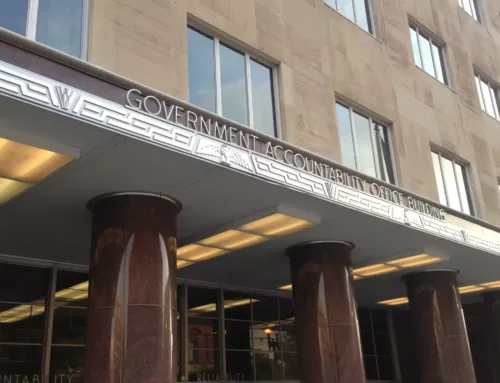Testimony of Steve Ellis
Vice President, Taxpayers for Common Sense
Committee on Financial Services
hearing on
“The Terrorism Risk Insurance Act of 2002”
September 19, 2013
Good morning, Chairman Hensarling, Ranking Member Waters, members of the committee. I am Steve Ellis, Vice President of Taxpayers for Common Sense, a national non-partisan budget watchdog. Thank you for inviting me here today to testify on the Terrorism Risk Insurance Act of 2002 (TRIA) and the Terrorism Risk Insurance Program (TRIP).
Taxpayers for Common Sense has been concerned with the federal involvement in providing terrorism reinsurance from day one. Congress enacted TRIA to “establish a temporary Federal program” that would “allow for a transitional period for the private market to stabilize, resume pricing of such insurance, and build capacity to absorb any future losses….”
We opposed the creation and extensions of the temporary program, but in each case have offered constructive commentary on how the program could be designed to reduce the possible burden on taxpayers and increase the amount of risk borne by the private sector. A dozen years after the tragic events of 9/11, the terrorism marketplace has settled to the extent that it is past time for the government to step aside and let the private sector handle the portfolio. If there is an extension, and we are not proposing there needs to be one, it should be for a short duration, charge reinsurance premiums, reduce the taxpayers’ exposure to risk, and explicitly put this “temporary” program on a path to ending.
Learning Lessons of the Past
Much of our concern with the terrorism reinsurance program comes from experience with the National Flood Insurance Program, where the availability of subsidized federal insurance largely prevented the development of a private market, forcing taxpayers to pick up the tab for approximately $25 billion in losses to date. In addition, below market rates serve as disincentive to mitigate for risk, something which is concerning in both a flood and terrorism context.
But there’s another example of the government backstopping an “uninsurable” risk and then ceding the business to the marketplace. A federal riot insurance program was created in 1968 after the series of urban riots had occurred and insurers had pulled out of the property insurance market. Insurers paid a premium to the government for reinsurance that would cover costs over a certain deductible. The private reinsurance market – which was far less sophisticated and capitalized than todays – eventually returned to the market and the federal program was terminated in 1985.
With the riot insurance program being the possible exception, President Reagan once observed that federal programs and agencies are “the nearest thing to eternal life we'll ever see on this earth.” And so you have this three year, explicitly temporary terrorism reinsurance program program extended for two years then extended for seven years. Legislation has been introduced to extend the program for another five to ten years. That would result in a “temporary” program that’s old enough to vote or get a drink.
The 2005 extension was for a short term and began to shift more of the responsibility to the private sector. In contrast, the 2007 extension mostly maintained the status quo, with the notable exception of significantly expanding the program scope by removing the stipulation that to qualify terrorist attacks must be done by foreign interests. It was also a seven year extension that doubled the life of the program. It would be completely irresponsible to simply extend the program again without incorporating additional taxpayer safeguards.
A Good Deal – Just Not for Taxpayers
I know that insurance companies and the insureds would like to see the program extended as is. No wonder, it’s a good deal. But as then-Congressional Budget Office Director Douglas Holtz-Eakin observed in the 2005 reauthorization debate, it’s not such a good deal for taxpayers:
“It is easy to exaggerate the overall costs to the economy of reducing the federal subsidy for terrorism insurance; in fact, those costs are likely to be small. One reason is that TRIA does not lower total costs of terrorist attacks but rather shifts them from property owners to taxpayers. Indeed, total costs might be lower without TRIA because efforts to mitigate risk could pay off in smaller losses from a terrorist attack.”
For more than a decade, insurance companies have been pocketing terrorism insurance premiums with nary a payout. The companies pay no upfront premium for federal reinsurance that would pay out post-event once a deductible equal to 20 percent of an insurance companies’ previous year premiums is reached. Above that threshold, 85 percent of the cost is borne by the taxpayer, and insurance companies would pay surcharge would be used to recoup 133 percent of the taxpayer outlays unless the industries aggregate loss exceeds $27.5 billion.
For the insureds, TRIA requires that insurance companies make terrorism insurance available. After significant initial growth, the take-up rate for terrorism insurance is relatively steady at a little over 60 percent since 2009. In 2012, the take-up rate was highest in the Northeast at 77 percent and the lowest in the west at 53 percent. The premium rates per million dollars of coverage were significantly higher for companies with a total insured value (TIV) of less than $100 million ($49) than companies with much higher insured value ($19 per million dollars of coverage for companies with a TIV of greater than $1 billion). Some of that can be attributed to economies of scale – you buy more insurance, you get a better price. Terrorism insurance premiums as a percentage of total property insurance premiums by TIV was fairly consistent, from four percent for companies with a TIV of less than $100 million to five percent for companies with TIV over $1 billion.
Ongoing Development of Terrorism Reinsurance Markets
Reinsurance and insurance industry response to large disastrous events is to initially pull back only to return with greater capacity, like pruning a tree. This occurred after Hurricane Andrew in 1992 and the Northridge earthquake in 1994. After more recent events like the storms of 2005, there wasn’t the retreat but increased reinsurance capacity post-event. Roy Williams, the Director of Aviation for the New Orleans airport testified before this committee a month and a half after 9/11. Although he was testifying in support of federal involvement in the insurance markets, his testimony about the difficulty of obtaining insurance unintentionally made another point. As Philip Bougen points out in a journal article, “The significance of this testimony is apparent: the insurance industry had learned sufficient about terrorism risk insurance that while on September 20th insurance was unavailable, a short while later it was available at a price, and by the third week of October available at a lower price, all without federal support.”
Releasing their 2013 Terrorism Risk Insurance Report, Marsh and Co. indicated that “capacity in the standalone terrorism insurance market has increased significantly over the years.” In the report they estimate that the terrorism insurance market capacity is $4.3 billion, and that there is up to $2 billion per risk in standalone capacity.
It’s important to note that in the U.S. the reinsurance market is servicing a very small slice of the reinsurable pie. Some insurance companies are purchasing reinsurance to cover a portion of their deductible. This market would clearly grow if the federal government was no longer taking that market share with reinsurance that doesn’t charge a premium.
Before 9/11, terrorism models didn’t exist in the marketplace. Since 2002, companies modeling terrorism have been refining and updating their models each year, in some cases multiple times a year. There is also greater sophistication and customization in the models. While this discipline isn’t as developed as natural catastrophe modeling, it has clearly grown significantly over the last decade.
TRIA Going Forward
Absent Congressional action and a Presidential signature to extend TRIA, the “temporary” Terrorism Risk Insurance Program will expire December 31, 2014 after a dozen years in existence. We believe that it should expire. However, it is important that this be an affirmative decision by Congress and the administration that can lead to an orderly transition in the market. To that end, we think it is important to have hearings like this one and that the committees of jurisdiction thoroughly examine the issue.
If Congress should decide to continue TRIA in some form, we have several recommendations.
Short term – the program was always intended to be a temporary transition. A long term extension like was done in 2007 lends itself more to permanence than transition. A two or three year extension should be the maximum. Furthermore, the law should explicitly state that this is the last extension.
Skin in the Game – the 2007 extension did nothing to shift more responsibility onto the private sector. Any new extension should increase the trigger for federal involvement dramatically – gradually increasing to as much as $50 billion. In addition, the deductibles should be increased throughout the extension and companies should pay a premium to the federal government for reinsurance coverage.
TRIA was created in a much different time with extensive uncertainty about future risks and the marketplace for terrorism insurance and reinsurance. TCS believes we have crossed the bridge to where the program should be ended and the market respond. It’s never easy to take that last step, but our experience is that it won’t get any easier.
This program doesn’t reduce any of the risks to people or property from terrorist attacks, nor does it encourage companies to minimize and mitigate those risks through security measures. It simply shifts much of the fiscal risks off property owners and insurance companies and puts it on the backs of taxpayers. It’s time for that to end.
Evolution of TRIA (Adapted from Marsh, Inc.)
| TERM | NOVEMBER 26, 2002 – DECEMBER 31, 2005 | JANUARY 1, 2006 – DECEMBER 31, 2007 | JANUARY 1, 2008 – DECEMBER 31, 2014 |
| Official Legislative Name | Terrorism Risk Insurance Act of 2002 (TRIA) | Terrorism Risk Insurance Extension Act of 2005 (TRIEA). | Terrorism Risk Insurance Program Reauthorization Act of 2007 (TRIPRA). |
| Coverage Summary | Covered acts committed by individual(s) acting on behalf of any foreign person or interest to coerce the civilian population of the US or to influence the policy or affect the conduct of the US government by coercion. | Same | Eliminated the distinction between acts of foreign or domestic terrorism. |
| Territory | U.S. Only | Same | Same |
| Certification Threshold | $5 million | Same | Same |
| Federal Backstop Trigger | $5 million | $50 million in 2006, $100 million in 2007 | $100 million |
| Insurer Retention | 7% in 2003, 10% in 2004, 15% in 2005: Applied against prior-year direct earned premium. | 17.5% in 2006, 20% in 2007: Applied against prior-year direct earned premium. |
20%: Applied against prior-year direct subject earned premium.
Subject to certain property and casualty insurance lines. |
| Government Share Excess of Retention | 90% | 90% in 2006, 85% in 2007 | 85% |
| Recoupment | Included with discretion on part of Secretary of Treasury — subject to maximum 3% per year applied to policyholders’ premiums. | Same | Formula will be calculated using several factors: the size of the total loss, the amount of the industry aggregate retention as defined, the amount that the insurers actually retain, and the amount of the federal government reimbursement. There is no maximum on the amount that will be applied to future policyholders’ premiums. For events that occur after 1/1/2012, the mandatory portion of any recoupment must be collected by 9/30/2017. |










